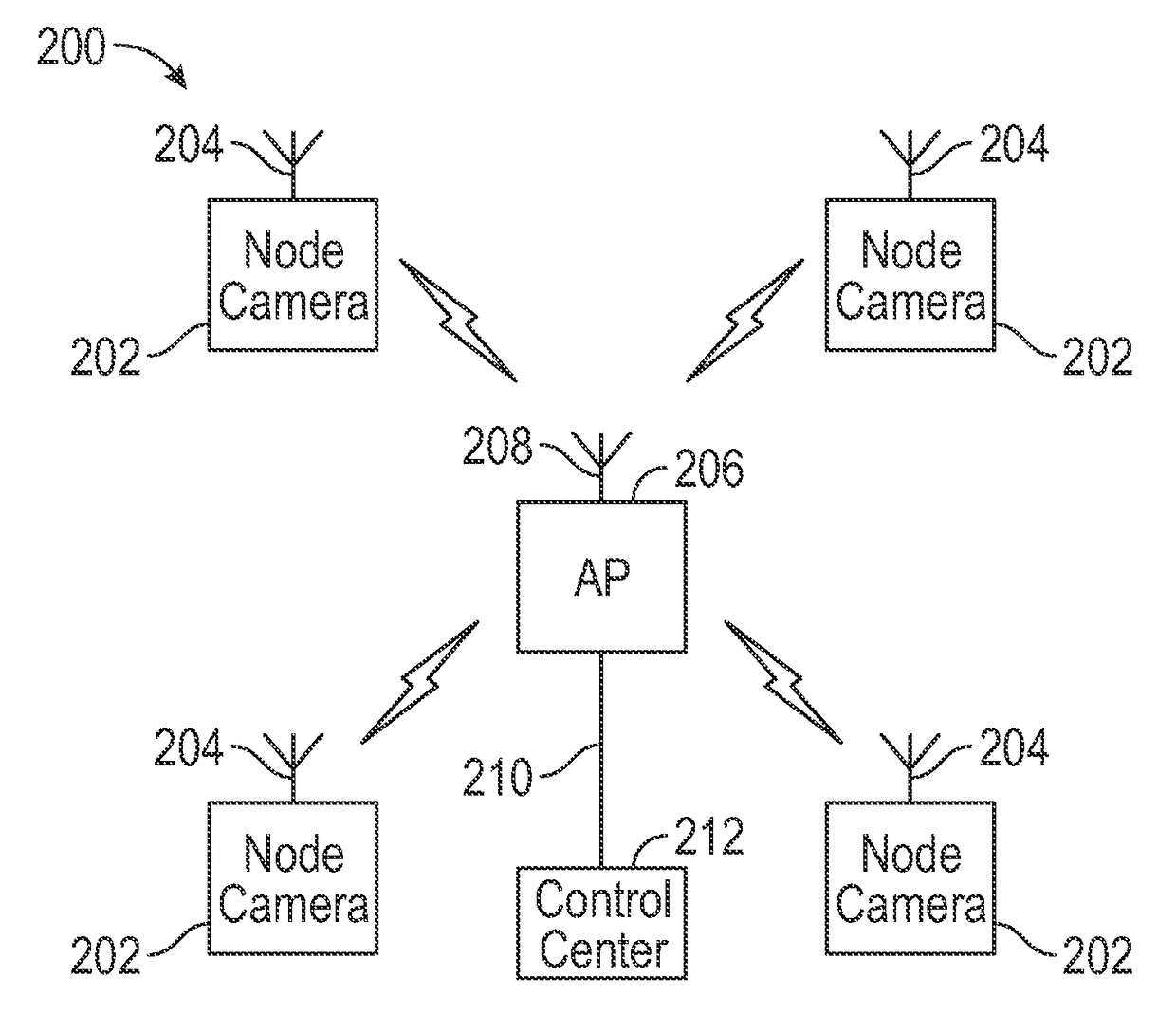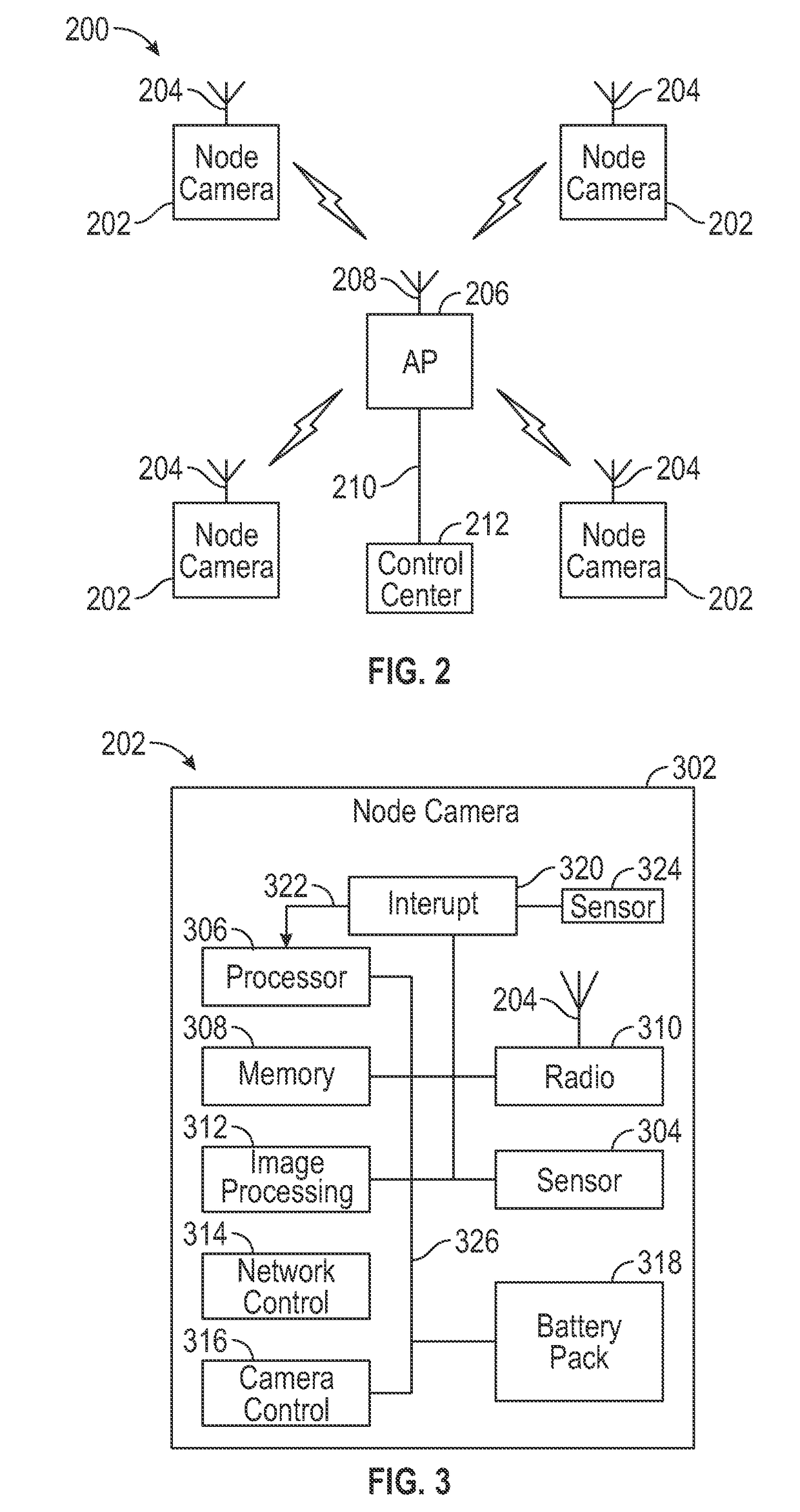Lost access point power save mode for WiFi devices
a power saving mode and wifi technology, applied in the field of radiofrequency (rf) communication devices and systems, can solve the problems of consuming a non-negligible amount of power, undue draining of a battery pack,
- Summary
- Abstract
- Description
- Claims
- Application Information
AI Technical Summary
Benefits of technology
Problems solved by technology
Method used
Image
Examples
Embodiment Construction
[0030]In the following description of exemplary embodiments, reference is made to the accompanying drawings which form a part hereof, and in which it is shown by way of illustration of specific exemplary embodiments in which the invention may be practiced. It is to be understood that other embodiments may be utilized and changes may be made without departing from the scope of the invention. Various embodiments of the invention are described below in the context of a battery-powered, WiFi camera network, which is one example of a low-power, wireless communication application. Although various embodiments and features of the invention are described below in the context of a battery-powered, wireless camera network, it will be appreciated by those of ordinary skill in the art that various features and advantages of the invention can be applied to other types of wireless communication devices, systems or networks in which low power operation is desired.
[0031]FIG. 2 illustrates a wireles...
PUM
 Login to View More
Login to View More Abstract
Description
Claims
Application Information
 Login to View More
Login to View More - R&D
- Intellectual Property
- Life Sciences
- Materials
- Tech Scout
- Unparalleled Data Quality
- Higher Quality Content
- 60% Fewer Hallucinations
Browse by: Latest US Patents, China's latest patents, Technical Efficacy Thesaurus, Application Domain, Technology Topic, Popular Technical Reports.
© 2025 PatSnap. All rights reserved.Legal|Privacy policy|Modern Slavery Act Transparency Statement|Sitemap|About US| Contact US: help@patsnap.com



